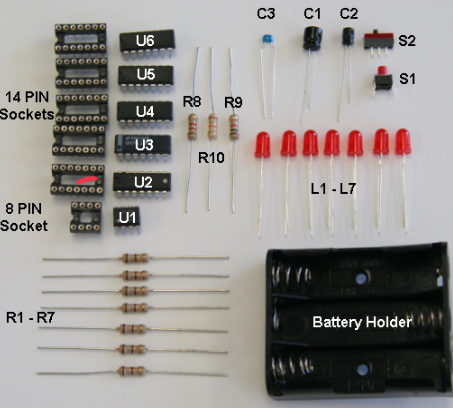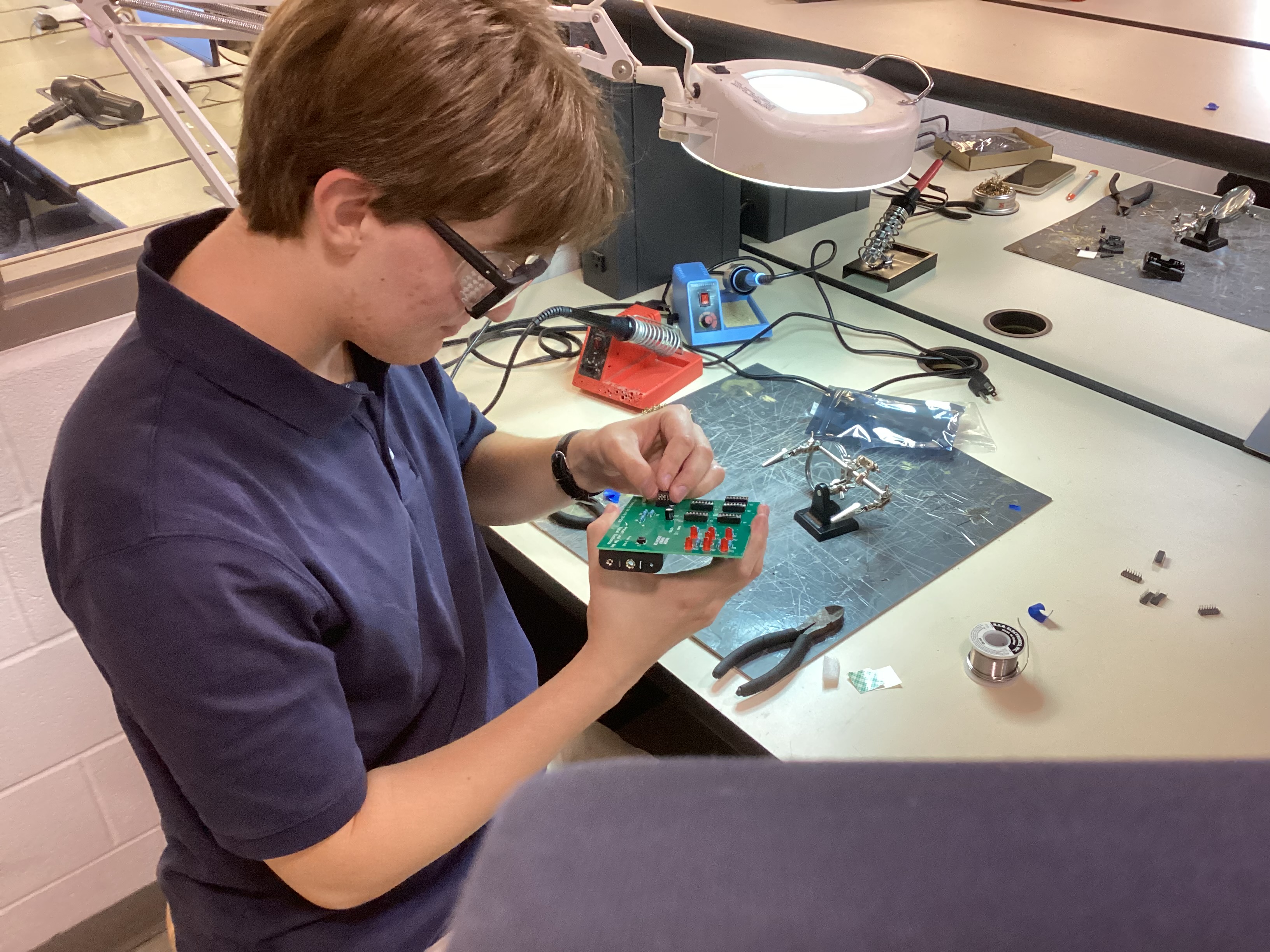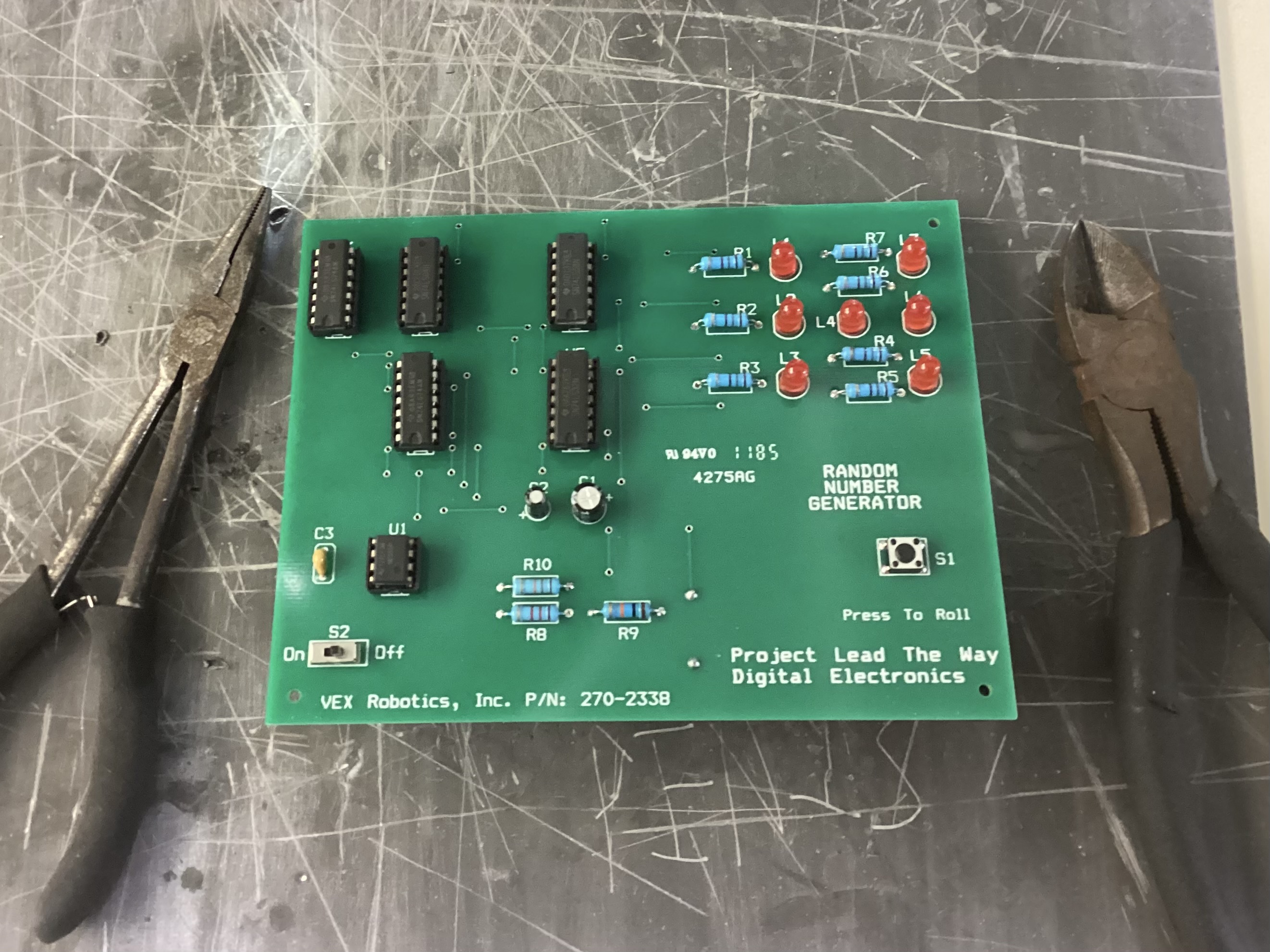Design Process
Define a Problem



Generate Concepts
This project involved identifying electrical components and soldering the components to a PCB.
This created a random number generator that would output a random number, 1-6, as seen on dice.
Goals:
* Identify all electrical components properly. These included resistors, LEDs, ICs, and switches.
* Solder all of the components to a PCB without damaging them.
* Test the randomness of the random number generator.
Develop a Solution
The circuit is soldered correctly and works.
Construct and Test Prototype
Probability Table:
| Number Rolled: | 1 | 2 | 3 | 4 | 5 | 6 |
| Tally Count | 卌 卌 卌 卌 卌 卌 卌 卌 卌 | 卌 卌 | | 卌 ||| | 卌 卌 || | 卌 卌 ||| | 卌 卌 | |
| Total Count | 45 | 11 | 8 | 12 | 13 | 11 |
| Distribution | 45% | 11% | 8% | 12% | 13% | 11% |
Evaluate Solution
Q: Is this random number generator truly random?
A: This "random" number generator is not truly random. Ones are favored at 45% distribution,
while threes only have half of the truly random 16.67% distribution, 8%.
If this generator were truly random, all numbers 1-6 would have an equal 16.67% chance, which they do not.
Based on the experience of others with this random number generator, it is likely
an issue with the ICs themselves that generate the random numbers.
Q: What is the origin of debugging?
A: "Debugging" is the act of fixing and troubleshooting an issue with electronics or code.
The term originates from the 1940s when Admiral Grace Hopper found a moth (bug) in
the Mark II computer at Harvard University. The moth was stuck in a tape,
which caused the computer program to malfunction. (source: Wikipedia "Debugging")
Conclusion
In this project, I learned how to use multiple components, including resistors, LEDs (Light Emitting Diodes), capacitors,
ICs (Integrated Circuits), a slider switch, along with a pushbutton. Resistors, buttons, and switches can be soldered either way,
but for LEDs and capacitors, polarity matters. For the ICs, I soldered sockets on in the correct direction first to ensure the ICs
did not get fried with the heat of the soldering iron.
Using proper SI prefixes was also important in the identification of resistors and capacitors, such as kiloohms (kΩ),
ohms, and picofarads (pF).
I only encountered two issues during this project. The first issue was that the soldering iron was not hot enough.
This led me to switch to a different soldering iron. The second issue was that the IC sockets fell off of the PCB when flipped over.
To solve this issue, I taped the IC sockets to the board so they were stabilized while soldering. I removed the tape afterwords.
As seen in the probability table above, this random number generator is not truly random.
In the future, I would like to conduct research to find out the cause of this issue and make the
random number generator more random, and thus fairer.
This random number generator will not be used in board games, as it would be unethical to
use an unfair generator.
This was a very fun project and a great way to practice my soldering skills!